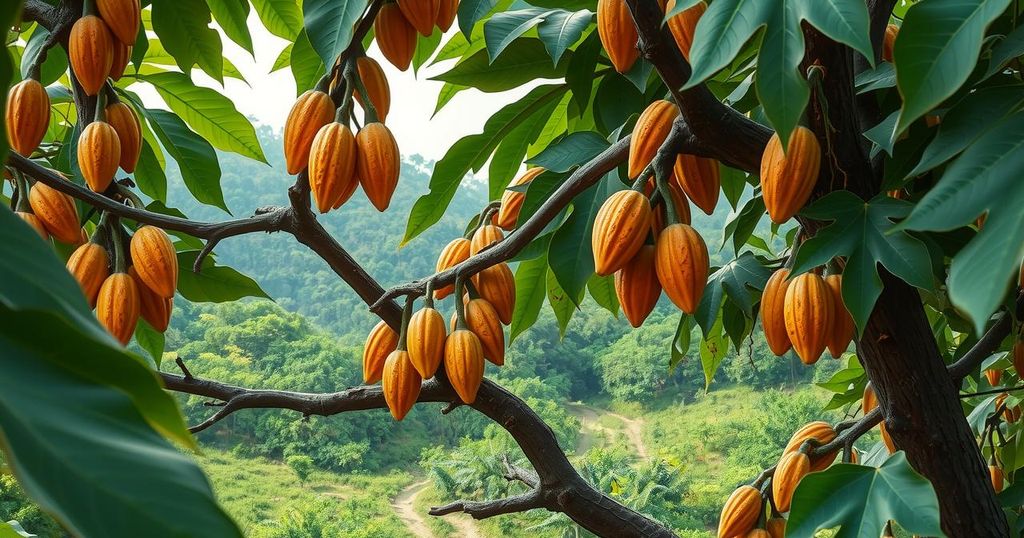Ghana’s President Reports $1.3 Billion Revenue Gap for Cocobod

Ghana’s President John Mahama has reported a $1.3 billion revenue gap for Cocobod due to rollover contracts from the previous season, which have contributed to severe financial challenges. The government faces a total debt of $8.7 billion, while cocoa production is experiencing mixed market signals with a projected surplus despite high costs affecting consumer purchasing behaviors.
Ghana’s President John Mahama has highlighted a projected revenue gap of approximately $1.3 billion for the country’s cocoa body, Cocobod. This announcement follows his recent reappointment and comes amid significant economic challenges, including a rising cost of living crisis in the region. The nation is facing $8.7 billion in total debts, with notable amounts owed to its energy sector and Cocobod itself, which is struggling with debts amounting to 32.5 billion cedis (around $2.1 billion).
In President Mahama’s address, he noted Cocobod’s inability to deliver 333,767 metric tons of cocoa in the 2023/2024 season, leading to the rollover of these contracts into the 2024/2025 season. He outlined that this situation results in a loss of $4,000 in revenue for every ton of cocoa delivered under the rollover contracts, cumulatively leading to a potential revenue loss of $495 million for Cocobod.
The President also asserted that Cocobod has failed to capitalize on high cocoa prices observed in the futures markets, which peaked at $12,000 per ton in recent years. Currently, market prices range between $7,000 and $8,000 per ton, still significantly higher than two years prior. Inquiries have been directed towards Cocobod for further comments, though no response has been received thus far.
Despite Ghana’s challenges as the world’s second-largest cocoa producer, recent market trends indicate a potential stabilization. The International Cocoa Organization (ICCO) has projected a 142,000-ton surplus for the 2024/2025 season despite previous years of supply deficits. Additionally, cocoa arrivals in Côte d’Ivoire show an increase of 14.8% from the previous year, while Ghana’s cocoa stocks are reported to have exceeded the previous season’s total production.
Nevertheless, the cocoa market is experiencing demand pressures, particularly in premium chocolate products, with several manufacturers such as Mondēlez and Hershey reporting significant cost challenges that may impact earnings in 2025. Consumers are becoming more selective with purchasing due to economic constraints, which has subsequently slowed certain confectionery sales. The potential introduction of tariffs has also created uncertainty in the market, amidst the ongoing economic fluctuations.
In summary, Ghana’s cocoa sector faces a significant revenue shortfall due to rollover contract losses and rising debts. Despite challenges, there is cautious optimism for future cocoa surpluses. However, market dynamics remain fragile, as manufacturers confront rising costs and shifting consumer behavior amid economic pressures. Further developments in both production and market strategies will be essential for navigating these financial uncertainties.
Original Source: www.confectioneryproduction.com








